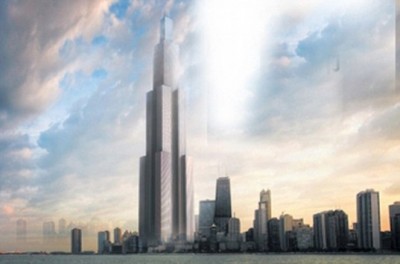
To many homeowners and property investors, the ideal city is one where real estate provides a handsome return on investment. Beyond that, there are other important criteria to consider; but, at its heart, an ideal city is one that sizable numbers of people want to live in.
What factors prompt substantial numbers of people to decide they want to make their homes in a particular city? And how can we guide our own communities towards these ideals? Let’s take a look at some of the characteristics that define an ideal, livable, sustainable city:
An Ideal City Would Not Be Haphazard, but Rather Planned
Cities are already home to a majority of the world’s population, and “urbanisation” – the tendency for large numbers of people to move away from rural areas and relocate to cities — is a trend that is likely to continue.
There are advantages and disadvantages to this trend. As people move to cities, opportunities within those cities tend to increase. However, the downsides are that traffic congestion can also grow; there may not be enough housing to sustain the rapidly growing population; and pollution levels can increase as well.
To create an ideal city, leaders must actively plan for the population’s growth and must also manage it wisely. That typically means hiring capable urban designers and urban planners who can proactively find solutions for planning and designing all the amenities that draw people to cities. The ideal city offers resources such as attractive public parks, well-designed roads, efficient public transportation systems, well-stocked public libraries, appealing public spaces and adequate housing for all the area’s residents.
As part of their education, urban designers typically study a range of courses intended to help them learn how to design and oversee multifaceted building projects, engage in property development, plan environmentally sustainable building complexes and comply with local construction and environmental laws.
Urban planners study some of the same subjects, but their education is less focused on design and more focused on analytics and public policy. Both types of professionals have an important role to play in managing the population growth in cities.
An Ideal City Could Withstand Extreme Weather Events
Nobody wants to live in a city that could easily be flattened by tornadoes or flooded by rising seas. The ideal city has leaders who are proactively concerned with hardening the city’s infrastructure in hopes of decreasing their area’s vulnerability to natural disasters. This is another task that expert urban designers and planners can help to facilitate.
There are many methods that cities’ leaders can use to make their cities more resilient. It’s common for cities’ leaders to draw up disaster management plans that detail the methods being used. In each case, local conditions and weather patterns need to be considered; coastal cities’ disaster management plans are typically different from Midwestern cities’. In the ideal city, leaders would proactively equip the area with all the resources needed for dealing with whichever types of natural and other disasters are most likely to occur in their particular region of the world.
“Walkable” Cities With Efficient Public Transportation
Research has determined that some of the most valuable real estate tends to be located within walkable cities. In an ideal city, the residents would have the option to live without a car, because they could easily get from place to place either by walking, cycling or taking public transportation.
Bringing Nature and Green Spaces to the City
Air pollution isn’t just an inconvenience; it actually kills people. However, we can help to mitigate some of air pollution’s dangerous effects by designing tree-filled and plant-filled green spaces within our cities.
These green spaces can help to remedy a phenomenon that’s referred to as “the urban heat island effect”. A heat island is a space where the temperature is hotter than the temperature in the surrounding areas. According to the Environmental Protection Agency (EPA), trees and vegetation can help to improve the air quality and water quality in cities, and they also help to improve stormwater management and provide other benefits.
Diverse Culture, Entertainment and Amenities
Culture is at the heart of strategic urban planning, and it’s also one of the key factors that attracts people to cities. Thriving cities offer abundant opportunities for people from diverse cultures and backgrounds. This abundance of opportunities, in turn, results in prosperity for the city’s residents.
Economically prosperous cities tend to offer their inhabitants and visitors a broad diversity of interesting things to do. A flourishing city tends to have restaurants, theatres, nightlife, and multiple venues for sporting events and the performing arts. There are museums for educational enrichment. There are many shopping centers and markets where trade is brisk.
These are just a few of the things that can improve city living and contribute to an ideal city environment. If you’re hoping to buy property that will increase in value, it’s worth seeking out parcels located in well-planned, walkable cities with proactive local officials, diverse culture and all of the other features discussed above.




 POSTED BY
POSTED BY 

